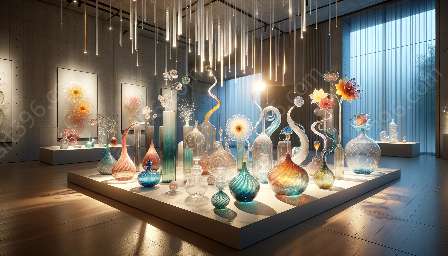Studio glass is a versatile and captivating artistic medium with distinct defining characteristics that set it apart from other forms of glass art. In order to understand studio glass, it is essential to delve into the history of glass art and its evolution over time.
History of Glass Art
Glass art has a rich history that dates back thousands of years to ancient civilizations such as the Mesopotamians, Egyptians, and Romans. These early cultures utilized glass for practical purposes like containers and jewelry, and later, they began to explore its aesthetic potential through techniques such as glassblowing and glass casting.
During the Renaissance period, the art of glassmaking flourished in Venice, giving rise to exquisite glass sculptures and elaborate chandeliers. The 20th century witnessed the emergence of modernist movements in art, which influenced the evolution of glass art as artists began to experiment with new forms, colors, and techniques.
One of the most significant milestones in the history of glass art was the Studio Glass Movement, which originated in the 1960s. This movement marked a shift from large-scale glass production in factories to the creation of unique, handcrafted glass pieces by individual artists in their studios. This transition paved the way for the development of studio glass as a distinct artistic medium.
Glass Art
Glass art encompasses a wide range of artistic expressions, including blown glass, fused glass, stained glass, and cast glass. Artists working in this medium often explore the interplay of light, color, and form, creating mesmerizing works that captivate viewers with their brilliance and transparency.
One of the defining characteristics of glass art is its transformative nature - in the hands of skilled artists, raw glass can be shaped and manipulated into an infinite array of forms, from delicate sculptures to functional objects. The transparency and reflectivity of glass also make it an ideal medium for capturing and refracting light, adding an enchanting dimension to the artwork.
What sets studio glass apart from traditional glass art forms is the emphasis on individual creativity and innovation. Unlike mass-produced glassware, studio glass pieces are typically one-of-a-kind, reflecting the artist's personal vision and skill. The intimate connection between the artist and the medium allows for the exploration of diverse techniques and concepts, resulting in a remarkable diversity of styles and forms within studio glass.
Defining Characteristics of Studio Glass
Studio glass is characterized by its artisanal approach, as artists often work in small-scale studios where they have direct control over the entire creative process. This hands-on involvement allows for experimentation with techniques such as glassblowing, kiln-forming, and coldworking, leading to the creation of unique and innovative glass artworks.
Another defining characteristic of studio glass is its expressive potential - artists use the medium to convey a wide range of emotions, concepts, and narratives. Whether it's through abstract compositions, figurative sculptures, or functional pieces, studio glass artists infuse their work with personal meaning and artistic expression.
The collaborative nature of studio glass also sets it apart, as artists often engage in dialogue and exchange of ideas within the glass community. This spirit of collaboration fosters creativity and knowledge sharing, leading to the continuous evolution of the medium.
Furthermore, the use of diverse materials and techniques in conjunction with glass, such as metal, wood, or mixed media, allows for the creation of multidimensional and hybrid artworks that push the boundaries of traditional glass art.
Conclusion
Studio glass is a vibrant and dynamic artistic medium that continues to evolve and inspire new generations of artists and enthusiasts. Its defining characteristics, rooted in history and innovation, contribute to its enduring allure and relevance in the contemporary art world.

